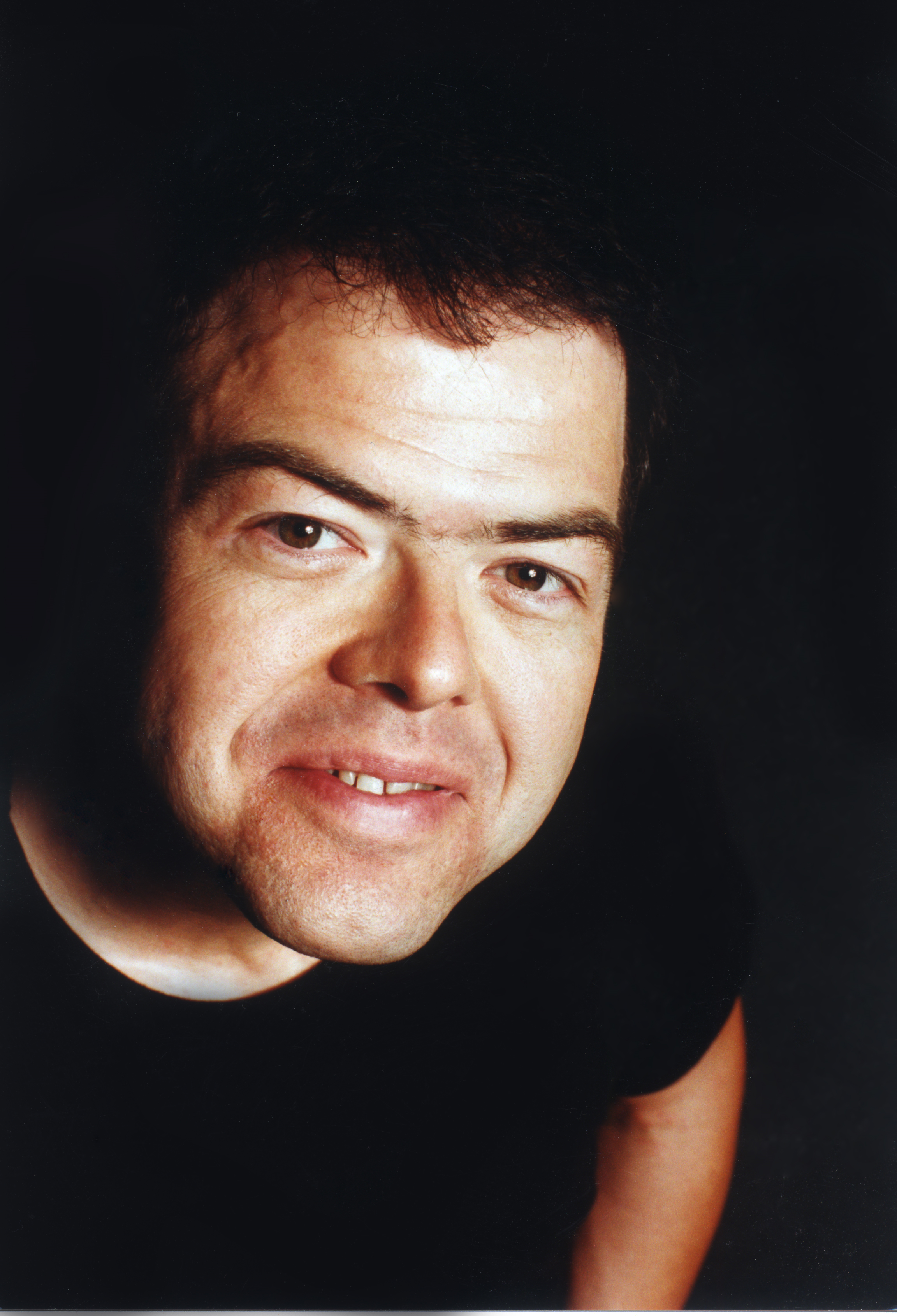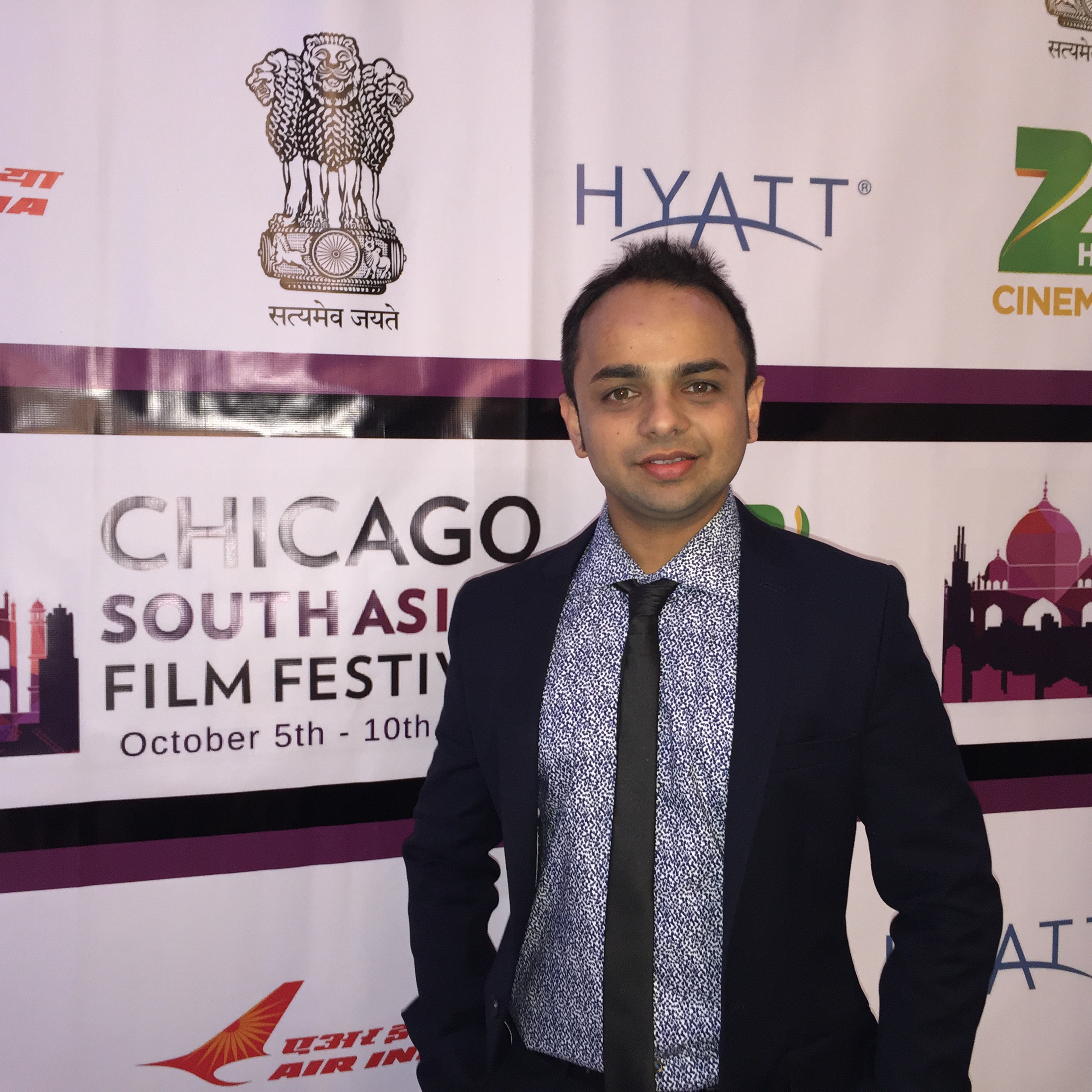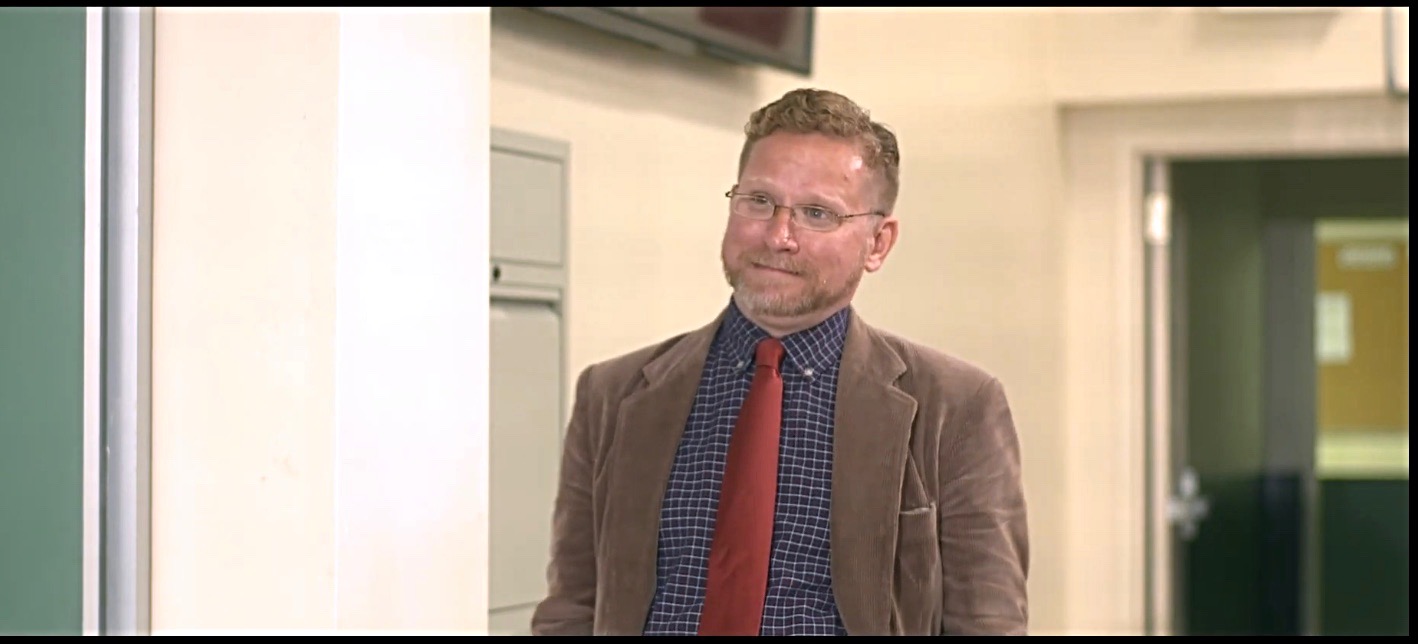
**Exclusive** In Their Own Words: “Aether” Special Effects wizard Kim Bailey
Friday night and once again the weekend has arrived. As the ongoing coverage of in development indie sci-fi project “Aether” from “Convergence” director Drew Hall continues at OneFilmFan, the next opportunity to interview a veteran Hollywood production member comes with it! Regardless of budget, any sci-fi film worth its salt needs cool, distinct visual effects to make the world the story encompasses come to life, much less our imaginations. Whether it was designing the original Borg cube for “Star Trek: The Next Generation“, the fantastical portal to another world for “Stargate“, or working visual magic for such films as “Mission: Impossible“, “Deep Impact“, and “Mission To Mars” or TV shows like “Space: Above & Beyond” and “Live Shot” via his company Starlight Effects, it is very safe to say Special Effects guru Kim Bailey knows his stuff. Top this all off with his Web Series, “Tiki Bar TV“, that won him the inaugural Streamy Award in 2009, Kim is now working on “Aether” and took some time to weigh in on his career and thoughts on his favorite genre, which of course, is Sci-Fi.
One Film Fan: The story so far, how were you first drawn to the Special Effects profession? When did it become evident that working with Special Effects was going to be your career choice?
Kim Bailey: It was 1978 and getting a chance to work on a major lot, that for the day was really hard to enter, let alone work there. The film was Gary Nelson’s “The Black Hole”, but it was working for Danny Lee that really brought me in. Before that I was just building models, making things flash and blink, or just helping out. At Disney, I was introduced to the old school of film making and some of the finest effects men from the golden age of film when there was a card system.
O.F.F.: How did you further learn/enhance your skill set (ie: mentors, influences, schooling)?
KB: Wow, that’s a great question, and one that I hope really keeps me grounded. Simply put, it is one man in 1977 who really put my feet on the right path, Bryson “Pete” Gerard. Back then, I was hired by Pete as a shop hand and sometimes model maker for “Buck Rogers” and “Battlestar Galactica”. But, it was his sage advice of “read everything you can get your hands on” and “look at things not for what they are, but what they can be”. Decades before the internet, the only two ways you could acquire knowledge without spending a fortune on school was to do skull sessions in the library or to subscribe to free manufacture’s technical periodicals and trade magazines. So, being a student of information, I set out on my subscription task and, by the end of the year, I was receiving over 100 magazines a week, and yes, I read every single one of them. The offshoot of that was a friendship with Pete that was founded on discovery of new things and what we could do with them along with the processes of making it come to life. It was a rabbit hole that was so deep and so vast that after a while the library for the each of us could fill a two car garage. That one piece of direction set my feet on a path, and for the day, placed my career as an exclusive and single source of information for mold making, chemical matrix and processes, electronics, composites, new mechanical inventions and processes; the list just keep going. After a while, in the 1980’s, there were times that effects supervisors would loan me out for my skills to other shows while also working on their show which, to me, I just thought this was normal. As for schooling, that is a vacant slate. While I wanted to attend a higher school of learning, the financial ability to do so and affirmative action of the day barred my entrance to college. The up side of this was the school of hard knocks and an education by the finest the film industry had to offer. No one was threatened by the kid with a note pad and a box full of questions, and after a while, some were so tired of telling me how to do it, they hired me and trained me to do it!
O.F.F.: What was your very first project and how did that prepare you for the future in the film and TV industry?
KB: My very first project where I was hired as a real industry professional had to be “Battlestar Galactica” at Hartland Universal. Before that, I was just pushing a broom. At Hartland, I was not the little picture with big ears, but rather I was the kid that was just cutting his teeth and making his “first steps into a larger world”. It was also at Hartland where I met Richard L. Bennett (Academy Award recipient along with Doug Trumbull for visual effects work on “Close Encounters of the Third Kind”), who literally showed me the magic black box called Motion Control. In those days, to process a VFX shot was part magic, part mechanical wizardry, part cinematography, part mad scientist, part memory expert, serious skills of a DP, and it all required a whole lot of patience. Everything in those days was experimental, and motion control systems didn’t come from a company, rather they were all built from scratch, including the software, for staggering amounts of money for the day. To say I was hooked was like saying, “a fat kid likes chocolate cake”, it was way too obvious. Come on, it had all the right elements for geeking out; models, super precision mechanical devices, electronics, super cool cameras (35mm Mitchell GC set up for motion control) all based around something that only a few handful of people in the world were doing! Talk about being in an elite club. Cool didn’t describe it, and I felt really fortunate to be able to look behind the magic curtain and hang with true innovators of the day.
O.F.F.: To date, based on projects you’ve been a part of ie: “Star Trek: Next Generation”, “Stargate”, “Space: Above & Beyond”, “Deep Impact”, etc. how has the experience of working with directors and actors been? Has it lived up to expectations (if any) you had in getting into the film/TV industry?
KB: It took a while to really get a handle on both Directors and Actors. Until 1985, I was under the impression that both crafts (Actors and Directors) were either one of two categories: born into GOD status (and thus feared) or given what ever they required or demanded, living so far outside the realm of reality of the common man that everyone revolved around their world and that is just the way it was. Yet, there were exceptions to the rule and that confused the crap out of me.
When I launched Starlight Effects in 1985, I met two directors (Dan Curry and Steve Johnson) that didn’t fit that mold what so ever. Both men were open, collaborative, and truly creative geniuses in their own right. Rather than barking orders or making unrealistic demands, these two men inspired me to reach far beyond what I thought was possible at the time and create work that still stands as some of my favorite moments (The Borg Ship as a point of fact). As for Actors, it was Ernest Borgnine that set me on my heels. Ernest was charming, friendly, open, and truly genuine. I was in awe of the man I knew as Lt. Commander Quinton McHale, but it was his take on being a celebrity that changed my view of all actors forever and, in part, the challenge that directors face as well. Ernest showed me (didn’t tell me, but showed me) that we, as film professionals, are a commodity that are bought and sold to the highest bidder who can afford our services. At the end of the day, it is truly just a career, and it should be treated with respect for the privilege of doing what we love. In short, it’s a business that feeds, clothes, and loves us if we treat it with the respect and courtesy we ourselves demand. Of all the pearls of wisdom, that one has haunted me in ways to numerous to describe.
O.F.F.: Has Science Fiction always been a favorite genre of yours, or did your career simply take you into that direction ultimately?
KB: Sci-Fi rules! It is a world with no limitations, where everything is possible, and the only limit is your imagination. For me, it is a blend of real science, the paths of humanity, cultural diversities, the integration social thinking and social consciousness, ergonomics of society, and the integration of technology into a seamless or transparent role in society and/or the transverse of that plus the discovery of what can be and what will be. I love to tinker and imagine the possibilities of what can be, so there is nothing like Sci-Fi (or any offshoot of that) that can equal the challenge and opportunity of what that genre can bring.
O.F.F.: So, onto a current project, “Aether”, currently in development……What drew you to this project or how did the opportunity come about?
KB: My dear friend David L. Snyder drew me to this project well before I knew anything about it. In short, he said “you have to do this, it is totally your thing man”. I have come to seriously trust David’s vision and, above all the people I have worked with so far, his collaboration has been the most rewarding.
O.F.F.: Tell us a bit about how it’s been overall so far working on the “Aether” and the development of the greater film and/or series.
KB: This starts with one person: (director) Drew Hall. It’s apparent I have had the honor to work with some of the best directors in the world, and as directors go (by my observations), Drew most certainly falls into that class. Now that we know who is driving the truck (as it were), it comes down to story and it’s premise. Story is everything, and the ability of the story teller to effectively communicate that story is essential to any project. From what I have seen so far, “Aether” fits the bill. The director is like a composer and orchestral leader, he assembles the orchestra, scores the piece, rehearses that score, and when the lights come up and he waves his wand, everyone is in harmony and the melody is something sublime. There are very few shows in my 39 years that have had a crew this wonderful and dedicated to a level of professionalism such as this. Even those whom donated their time were inspired, as I am, by the vision. That says volumes about the man driving the truck.
O.F.F.: If you can share, what do you personally feel are the biggest strengths of the concepts being explored in “Aether”?
KB: “Aether” is a property that has been touched upon in the past with only one true revelation, Disney’s “20,000 Leagues Under the Sea“. Yet, its time has arrived in the exact same manner that “Star Wars” was an unproven art form that swept the world in days. As properties go, if you ask anyone who knows me, I have called it with frightening accuracy to what a genre will do, and Steampunk, “Aether” specifically, will set the Sci-Fi/fantasy world ablaze with the exact same level of interest that happened in May of 1977. It’s time has come!
O.F.F.: To expand even more from above, how has the experience been, so far, of working with director Drew Hall? Any fun stories to share from the development stages of the project?
KB: Wow! I’ve been racing with my head down to the finish line, and these weeks have seemed a blur. When I am really focused and truly invested in something that I love, time vanishes for me, and so it has been on this project. What gets me most about Drew is we share so many things in common from our views of life to the way we interact with everyone (or at least it’s is a perception from my own point of view). I have not been inspired by a director in a very long time, and to say that Drew has done this and is the reason I love and stay in this mad business, is an understatement.
Fun stories: It has to be that when we start talking about any aspect of the project, it’s like shorthand. “I love it”, has got to be the catch phrase for Drew, since almost everything we have talked about has felt like we have come from the very same page of design and perspective. Not had that in forever.
O.F.F.: We can only guess you feel a great sense of accomplishment in the projects you’ve had the chance to be a part of, especially some of the bigger films/shows. Do you find you desire to ultimately stay with larger projects, or does the indie film world offer more chances to experiment and be even more creative?
KB: I live by one simple rule and purpose. We all have a place in the world and a purpose in life. It is what gives us meaning and fulfillment. For me it comes to this: “I am the paint, the brush, the canvas and the inspiration to help others visualize their dreams”. It really doesn’t matter if I am working on a $100,000,000 project or a $1,000,000 project. At the end of the day, it’s all the same: it’s my career that I love and am tortured by.
O.F.F.: What advice would you give to someone looking to get into the production side of the film industry in general?
KB: “Beat your head against the wall, until the thought goes away”! Now, if you have a hard enough head and that thought doesn’t get lost, then you may have the intestinal fortitude to succeed in the film industry, because this business is one hell of a headache.
O.F.F.: Per usual, as readers know, we always end with this question: What is YOUR favorite film of all time? Why?
KB: I have a few actually. “20,000 Leagues Under The Sea” for it’s forward thinking and Harper Goff’s 1954 production design. “The Fifth Element” as it’s a blend of many disciplines that make one seamless and wonderful story arc. “Forbidden Planet” for the marvelous story of the Krell and the amazing vision of Art Director Cedric Gibbons (one of those mentors for me), plus Production Designers Irving Block and Mentor Huebner. “Ghost in the Shell” from Production IG on so many levels! “Blade Runner“, of course, and “2001: A Space Odyssey“, and the list goes on.
Excellent and entertaining insight into the Visual Effects world from someone who has truly “been there, done that” and then some! Our sincere appreciation and thanks to Kim Bailey for doing this interview! And thank you, readers! Please continue to watch here at OneFilmFan for more interviews and coverage on “Aether”! In the meantime:
Follow and “Like” the official “Aether” Facebook Page at: https://www.facebook.com/AetherMovie
And remember to utilize the following hashtags when posting about the film on Twitter: #Aether #DauphinIsland #FortGaines #welcomebackscifi


